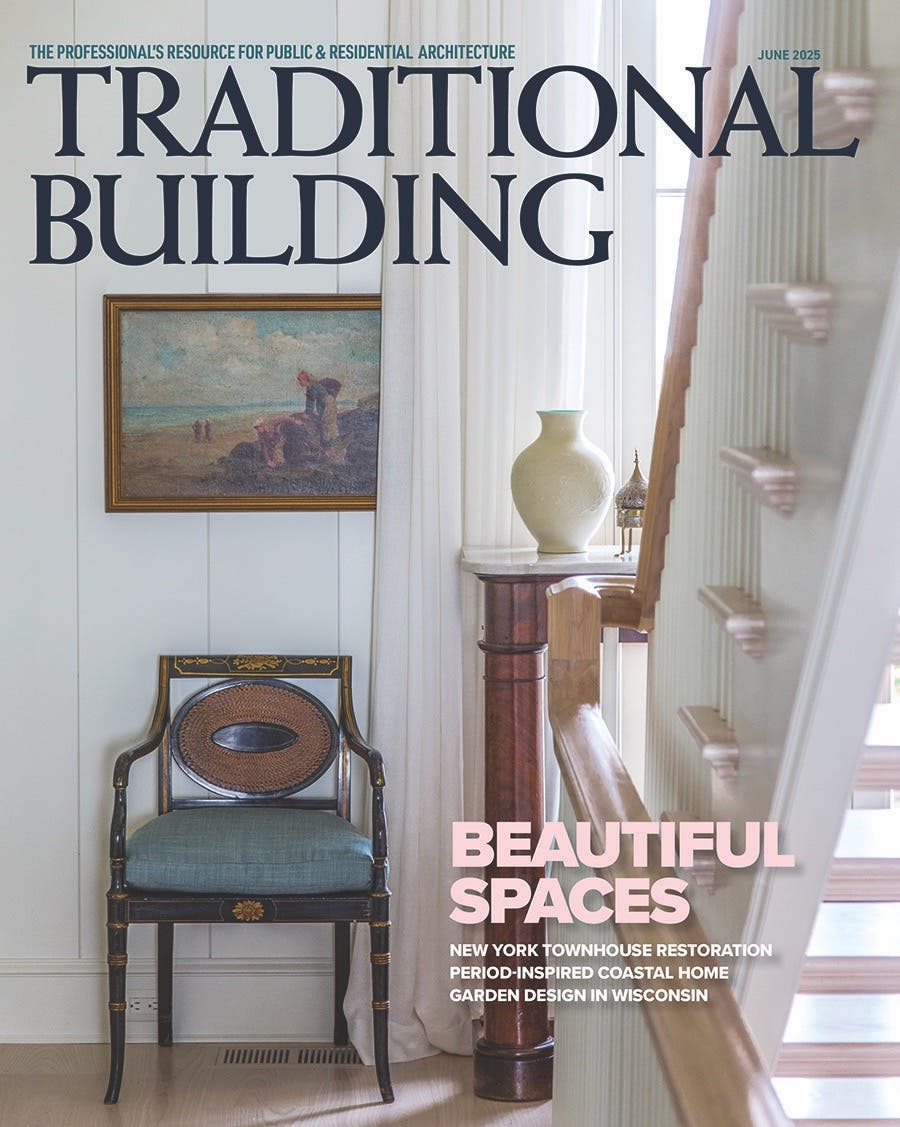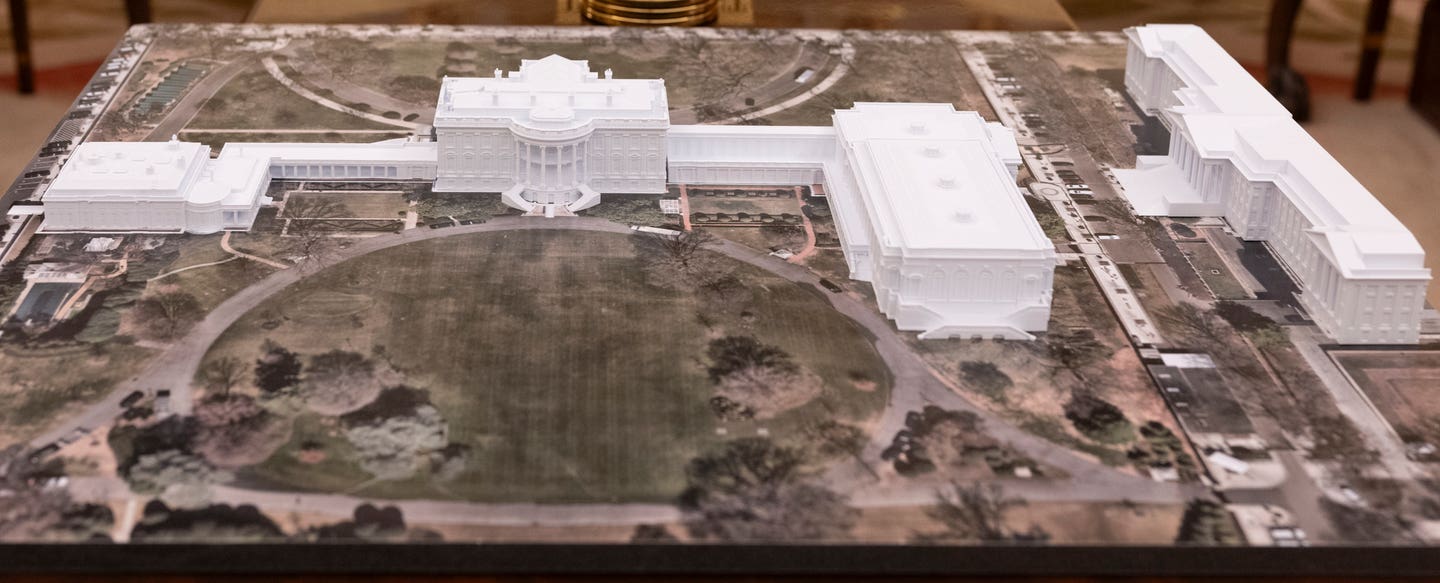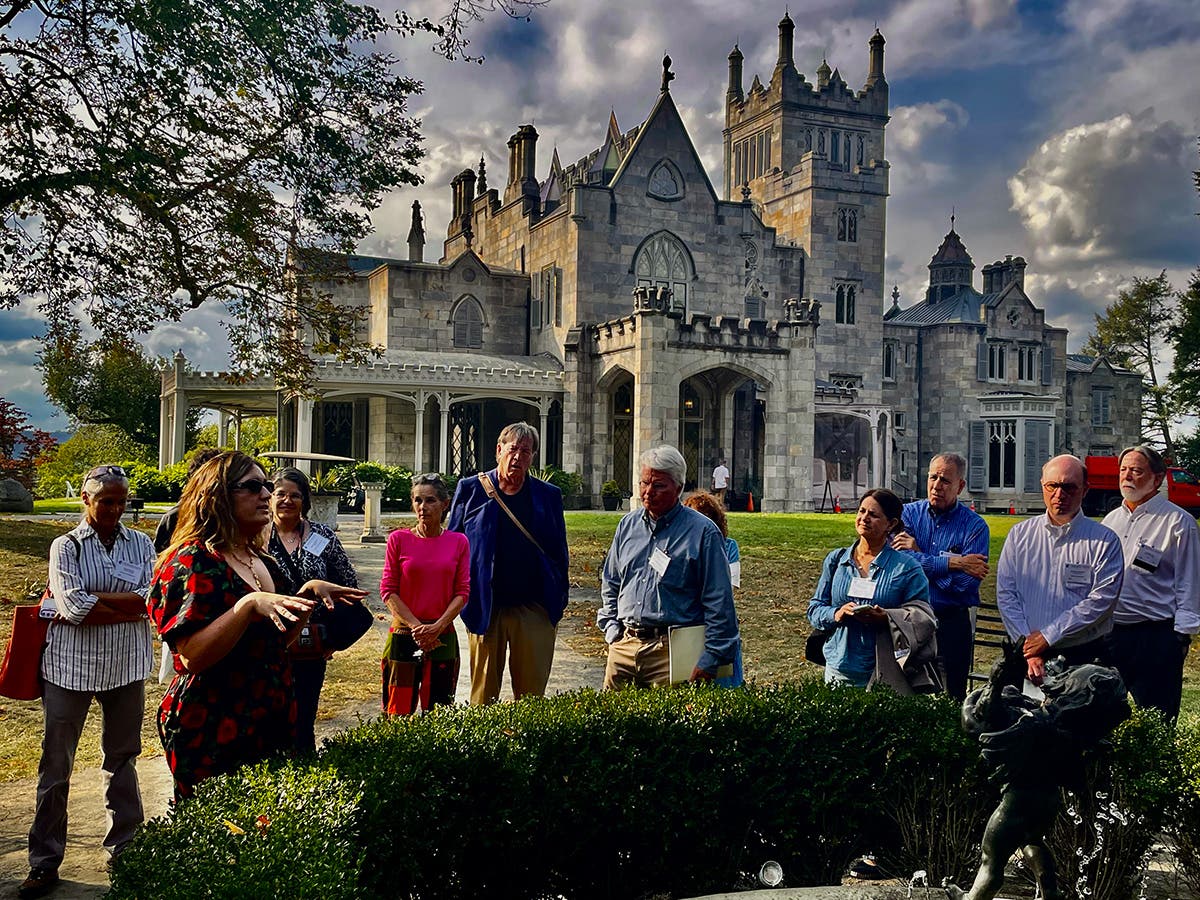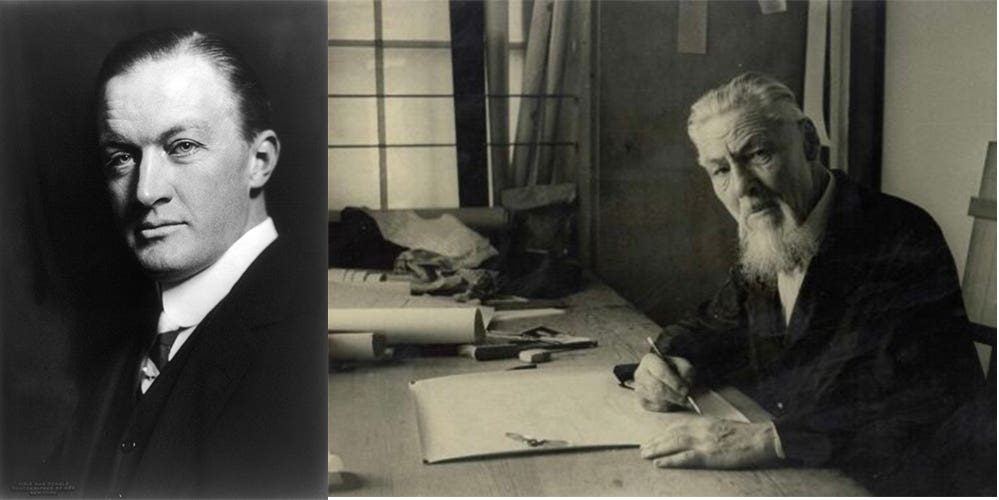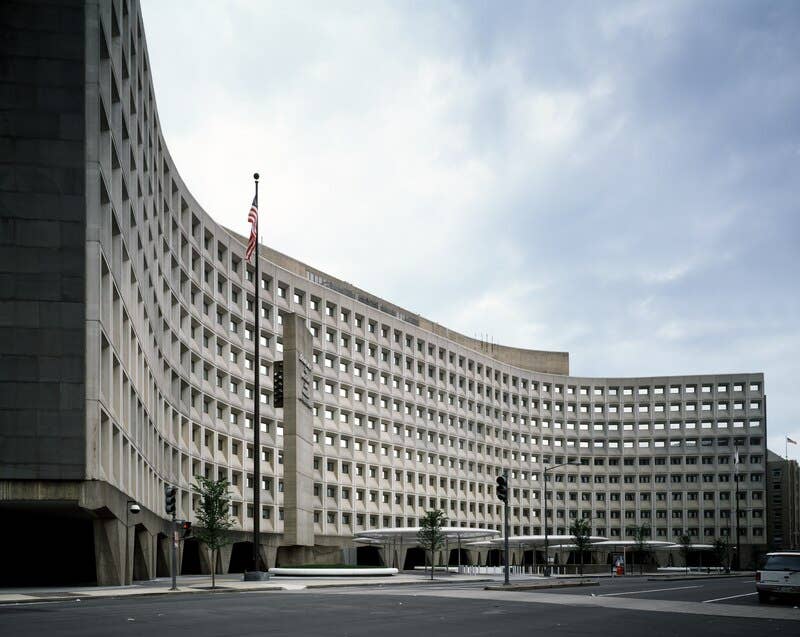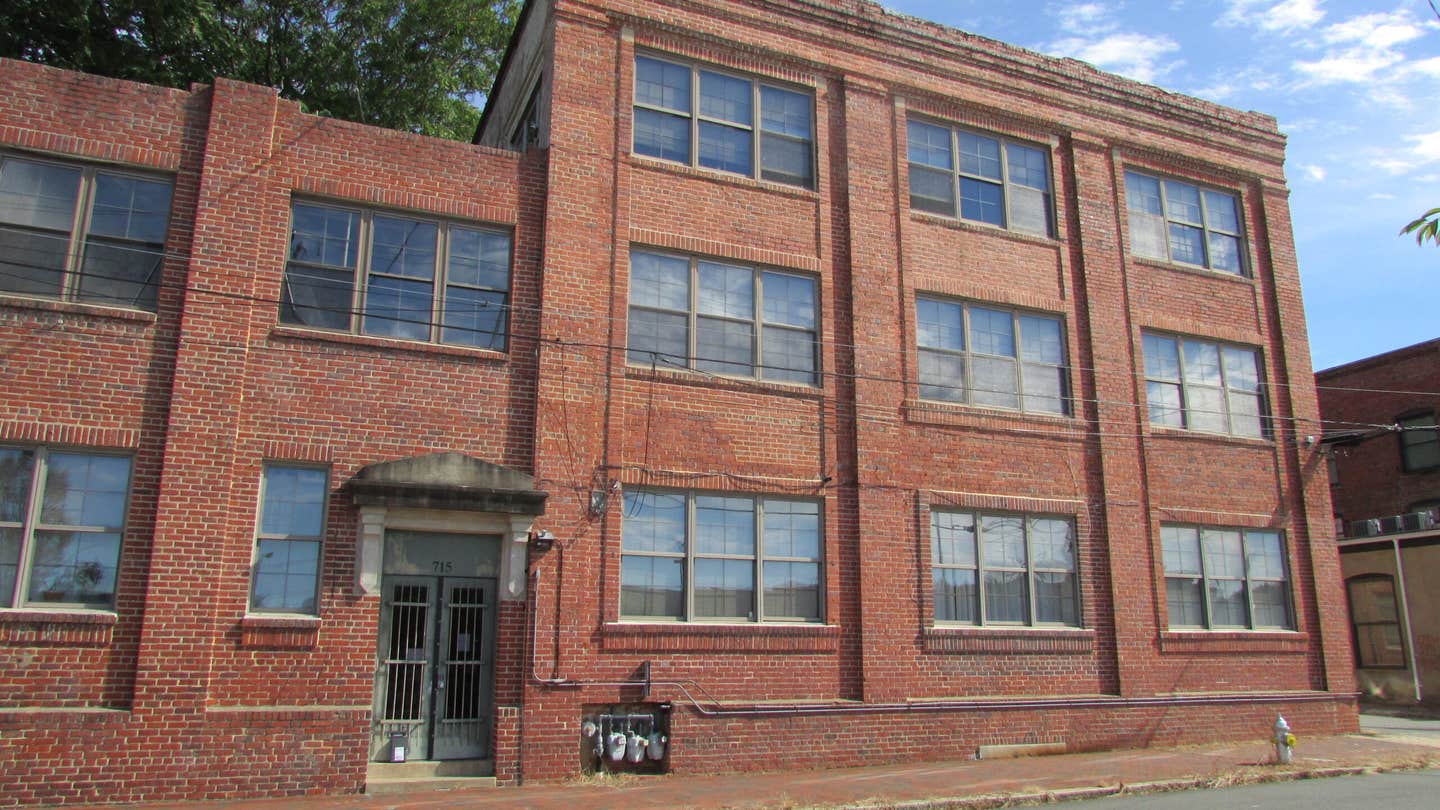
Mike Jackson
A Concrete Reality: Poured, formed and blocked.
Concrete has a long history, starting with early Roman natural cements but its explosive period of growth was the 20th century. Concrete is widely used for public infrastructure and buildings, but the BTHL documents are primarily related to architectural uses with some documents about concrete bridges. There are several different ways in which architectural concrete is used and most product literature addresses one of these. The most common of these are poured-in-place, pre-cast, concrete masonry units, stucco, and terrazzo each of which will result in various trade catalogs and technical publications.
There were several trade associations for the concrete industry, each of which produced many technical and marketing publications. The BTHL contains a great number of publications from the Portland Cement Association (PCA), the industry’s primary trade association. There was also a trade association for concrete block, the National Concrete Masonry Association. There are more than 700 documents in the BTHL on the topic of concrete and cement, which cover a wide range of applications methods and products. The BTHL documents generally end in 1963 so more recent innovations are not included. There are a great number of documents from the 1920s, a boom time in the America economy and the growth of the concrete industry.
The most important element of concrete is cement, the binder that hardens and holds the matrix together. There are more than 500 BTHL documents under this topic, which will lead to the many different companies that manufactured this critical component. The other major component of concrete is the aggregate, which were generally sources locally. The aggregate is sometimes a very special component of the mix when it is part of the final finish such as stucco and terrazzo applications. There were also special aggregates that were promoted as “light weight,” which had advantages of reduced structural weight of the building and better insulating properties. Once common product for this use was Haydite.
The use of concrete to make blocks and bricks is well covered in the BTHL. The earliest of these uses was a stone-faced block that was popular for residential and small commercial buildings in the first two decades of the 20th century. There are several interesting catalogs for the machinery to make these blocks, which were marketed by Sears, Roebuck and Co. Their “Wizard Concrete Block Machine” could produce 200 blocks in eight hours. The marketing promoted this as a “do-it-yourself” material. The more utilitarian style of concrete block can also be found in the BTHL, including detailed instructions on installation methods. The most modern version of the concrete block are the “screen or breeze block” designs of the mid-20th century. One particularly noteworthy document was produced by the National Concrete Masonry Assoc. in 1959 with credits to various architects for their block designs.
Concrete for residential designs is another way of exploring the BTHL. While the most common residential use of concrete today is the basement, there were a wide-range of historical examples of concrete houses to be found. There is one document from 1912 that is the results of a design contest for Plans of Small Houses of Poured Concrete, an idea that did not produce many results. There is another document from 1912 on Concrete and Stucco Houses with a great emphasis on the use of cement-based stucco as the exterior finish, with many examples of completed structures. There are several housing publications for the Portland Cement Assoc., which promoted the “fire safety” aspect of a concrete house. One early an unusual publication promoted Concrete Garages; The Fireproof Home for the Automobile.
Concrete is truly a versatile material, and its use in historic structures is increasingly a part of its a part of its legacy. The documents in the APT Building Technology Heritage Library provide an archival time-capsule for a modern material with a storied past.
Concrete: its use in building and the construction of concrete walls, floors, etc., 1877
This is one of the earliest publications on concrete construction in the BTHL. The introduction includes some historical references to Roman concrete and the use of concrete in civil engineering structures. The text describes many of the details of the production and application of concrete with few illustrations.
Northwestern States Portland Cement Co., 1906
This is a prospectus for this company but a rather interesting document that promotes the rapid growth and future of the concrete industry. There are a great number of completed buildings from across the country that are showcased to make the case for the varied uses of concrete. There are also great illustrations of concrete production facilities.
Representative Cement Houses, 1910
Concrete in home construction could be achieved in several methods. This publication notes five of these – solid concrete walls, concrete block with cement plaster, cement block, cement plaster on frame construction or concrete brick. There are multiple illustrations of houses for each of these methods, identified by architects and city.
Beauty and utility in concrete, 1915
This publication featured Midway Gardens, a “beer garden” designed by Frank Lloyd Wright, which opened in 1914. This indoor and outdoor complex made extensive use of cast-in-place and pre-cast concrete in geometric designs. The decorative sculpture elements were credited to Alfonso Iannelli. Unfortunately, this complex had a rather short life and was demolished in the 1920s during Prohibition.
Concrete machinery: Triumph, Wizard and Knox bock machines, 1915
One small niche of the residential market was the use of textured concrete block designed to simulate stone. This material had its peak of popularity around 1910. This product preceded the larger production of concrete block and was marketed as a “do it yourself” material. With a few molds and a cement mixer, a small producer could go into business. Sears Roebuck and Company was an earlier marketer of the equipment to make these concrete blocks.
Ransome Engineering Company, reinforced concrete experts ... 1915
One of the most important technical innovations of concrete was the introduction of steel reinforcing to provide more tensile strength to complement the high compressive strength of concrete. The Ransome Engineer Company was founded by Ernest L. Ransome, a pioneer in the development of reinforced concrete buildings. The Ransome company had patented designs for pre-cast panels systems, which are featured in this publication.
Blaw adjustable column molds & column heads, 1915
The development of construction tools, techniques and equipment for cast-in-place concrete was another aspect of the concrete industry. Various companies developed reusable concrete formwork, which was particularly successful for larger commercial buildings.
Concrete in Architectvre
This publication features case studies of concrete buildings with decorative interiors with panted and stained concrete, often in imitation of plaster and wooden materials. The Parthenon of ancient Greece is the cover image, which seems an unlikely choice. However, the story is connected. A full-scale concrete replica of the Parthenon was concrete in Nashville TN in 1925, using a distinctive exposed aggregate finish. This replica still stands as the centerpiece of an urban park and a late edition of the classically inspired “city beautiful movement.”
Terrazzo with medusa : white Portland cement (plain and waterproofed), 1931
Terrazzo is made with Portland Cement and colored aggregates, then polished. The use of “Medusa White” Portland cement resulted in “charming and striking effects … secured by exercising care in the selection of color and the size of the chips, also in choosing the coloring pigments.”
Flexicore floor and roof slab for industrial, commercial, institutional, residential, and agricultural building, 1946.
Flexicore is a patented pre-cast concrete floor and roofing slab. The units were manufactured in a factory controlled environment that assured quality. The slabs included a series of hollow cylinders that facilitated electrical, plumbing and HVAC systems.
Type of workmanship recommended for concrete block walls, 1953
Concrete block is still a popular use of concrete across all segments of the building industry. This small publication provides detailed photographs of the installation process for the construction professional or the “do-it-yourself” builder.
Welcome to the Pavilion : fashion gateway to the wonderful new world of block, 1959
Concrete block is generally considered to be a very utilitarian material, but there was a period when decorative and open web concrete block enjoyed great popularity. This publication featured distinctive block designs by various architects. This product is currently known by two popular names – “breeze block” or “screen block.”
Architectural Applications of Concrete in Buildings, 1961.
This publication features photographs of various concrete structures from across the U.S. organized around typical concrete uses such as frames, roofs, walls, decorative surfaces and miscellaneous uses. There is little text, but the large format photos provide great images with design credits at the end of the publication.
This post is part of a series that explores the historical applications of building materials and systems through resources from the Building Technology Heritage Library (BTHL), an online collection of AEC catalogs, brochures, trade publications, and more. The BTHL is a project of the Association for Preservation Technology, an international building preservation organization. Read more about the archive here.


